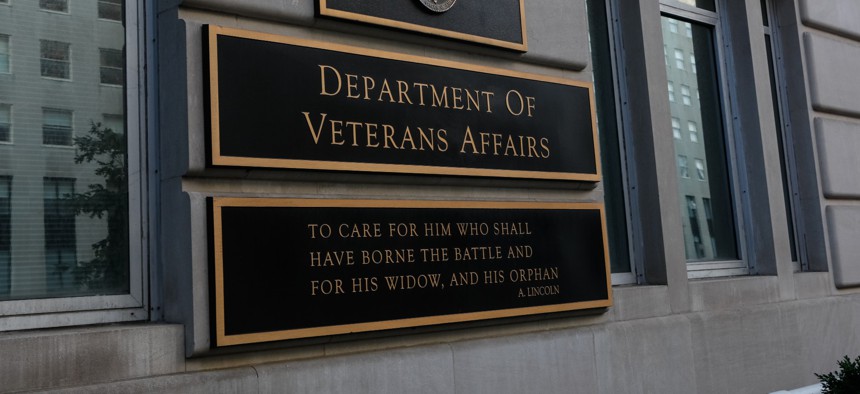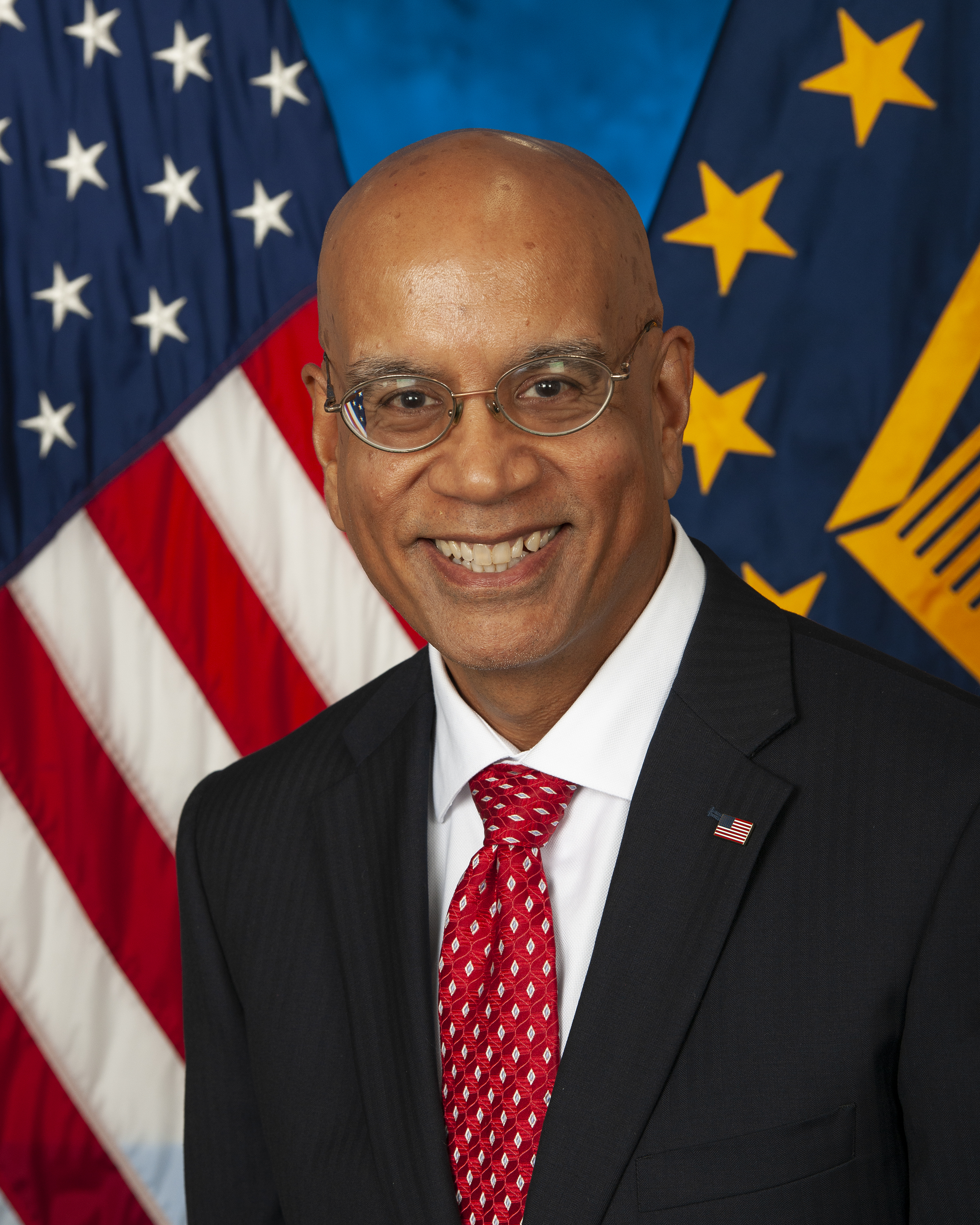A data strategy that benefits veterans

Getty Images
VA's Chief Data Officer Kshemendra Paul talks about the agency's "secret weapon."
FCW Executive Editor Adam Mazmanian spoke with Kshemendra Paul, chief data officer at the Department of Veterans Affairs, about how improved governance, new platforms and a focus on the workforce are reshaping VA’s approach to data. The interview has been edited for length and clarity.
How long have you been in the chief data officer role, and how did you arrive there?
I’ve been the chief data officer at the Department of Veterans Affairs since September 2019. I came to it the old-fashioned way: I applied through USAJobs.
I was really attracted to the role because of the focus on enterprise integration and transformation on a national-scope problem. VA’s data holdings are just enormous. I saw a real opportunity to help VA lead American wellness and health care through managing and using its data as a strategic asset.
I’m in the Office of Enterprise Integration, part of the VA central office, but I need to underscore how important and central the partnership with the Office of Information and Technology is. We have very complementary missions at the OI&T and the OEI. My team does strategy and policy governance for the secretary and the deputy secretary. Of course, enterprise integration implies transformation and implies information and technology. They have to go together.
In many ways, VistA is the nerve center for the VA and its operations, touching not just health records but supply chain, acquisition and more.
When I was an undergraduate in the early 1980s, VA’s work with VistA was an incredible case study in innovation. It was the first large-scale electronic health record and incredible in terms of advancing health information technology. Fast-forward, and our imperative with initiatives like Electronic Health Record Modernization is to bring more enterprise integration so that VA is better positioned in the modern era to serve veterans as an enterprise, regardless of location.
The Office of Enterprise Integration serves an overall capstone role. We work closely with the Office of Electronic Health Record Modernization through VA governance. My specific lane is data management and data analytics, which are central for EHR implementation because the original business case for the work is, of course, highly reliable interoperability with the Department of Defense — that single electronic health record that follows service members along their journeys as veterans.
To realize that vision, we have to have a focus on clinical data management. From a policy oversight governance perspective, we have a role there in OEI.

What’s the role of a CDO in getting organizations to agree on how to collect, identify and tag data and make it available for sharing?
My first function is chairing the Data Governance Council. That’s an inclusive, diverse body that has representation from every aspect of VA — full representation from the various information policy domains. My second responsibility is to coordinate, coalesce and drive the VA data strategy.
My third responsibility is working with leaders — operational leaders, data leaders, analytics leaders, data stewards and technologists — across the enterprise in conjunction with my partners in OI&T to coalesce an implementation roadmap for the data strategy. We’re getting very close to publishing that; it’s going through final coordination. That’s how we make it real. That’s the activity to build capacity and capability.
Going back to the strategy, we have quite a number of milestones over the next 18 months, organized by the five goals of the strategy: stewardship for data management; analytics, including operational decision support; technology; governance; and people.
People are so important. We estimate about 10,000 individuals are data scientists, data managers and data engineers across the enterprise, evenly spread out in locations all across the country. There’s a policy function, but there’s also coordination in ensuring transparency of execution of the data strategy and its implementation and ensuring we have a place for folks to come together, collaborate and advance the implementation of the data strategy.
What does that integration look like to veterans? What activities become easier to do?
The veteran is going to benefit tremendously from our pursuit of the data strategy. VA has been doing a lot of work pre-dating me around using data to improve the veteran experience. Let me give you a few examples. We want to be able to work hand-in-glove with DOD, and we’re on the cusp of publishing a joint data analytic strategy with DOD that centers on the service member veteran journey.
The vision of the Foundations for Evidence-Based Policymaking Act is to use the data from administering programs and services, plus information sharing among federal agencies and with non-federal partners, to be able to do longitudinal analysis to optimize lifetime outcomes. That’s the kind of thing we want to do at VA. At some point in the future, we want to be able to inform leadership in VA or have a framework for leadership in VA to be able to understand the best place to spend the incremental dollar to get that lifetime impact — whether that’s life span, whether that’s economic outcomes or whether that’s dignity measured by social connectedness. That’s the vision of the Federal Data Strategy and evidence act, and we’re trying to make that real on that service member veteran’s journey.
How do you incorporate that into the procurement and management of IT systems?
As I highlighted, we work closely with the CIO and his team. Through the Data Governance Council, we have baseline enterprise capability requirements for data analytics, with the implementation roadmap that I mentioned earlier that we’re getting close to signing out. We have a fair amount of work ahead of us over the next 18 months to expand that understanding of enterprise requirements, which in turn will inform what the CIO and his team do to provision those capabilities.
We did a competitive procurement awhile back for something called a common operating platform that we’ve had some success with. Next year, we’re going to be doing a maturity assessment based on Carnegie Mellon’s Data Management Maturity Model. It’s the same framework DOD has adopted.
We’re very excited about doing this maturity assessment across VA. We won’t be touching every corner of VA, but we’ll be doing some sampling of high-value programs so that we really have an understanding of our data management maturity. We think that’s going to help us have a shared, high-fidelity baseline that will help drive resource allocation and flow into procurement, including IT.
What’s VA doing to bring in the right people with the right skill sets to work on data?
Thank you for coming back to people. We have some of the best data talent in the country at VA, and it goes back to our lineage. After World War II, the government expanded the VA dramatically, in alignment with leading research universities and medical schools across the country, and that redounds to the current day with an interesting and very rich pipeline of talent in the organization, evenly distributed across the country.
Underneath the Data Governance Council, we’re standing up five sub-councils aligned against the five goals, one of which is people. Tracey Therit, our chief human capital officer, is going to chair that sub-council along with Gil Alterovitz, who’s our chief AI officer. He has a passion for data science and talent development and is very active in the interagency councils in those regards.
We also participated with the U.S. Digital Service. It worked with the Federal Chief Data Officers Council, where I’m a leader. And we pioneered, with Office of Personnel Management approval and support, a new hiring process that placed about 80 folks in the federal government. It was an initial pilot, and we want to come back to that.
In partnership with our human capital team, we’ve also identified about 1,000 data scientist positions across the department and are getting ready to redo that. We think that number is going to be a little higher because things have changed in terms of the job classification. But we also think that when you look at part-time data scientists and these other roles, it will blow out to about 10,000 individuals.
At VA, you often see clinicians who also work in informatics and balance a clinical career with some interest in technology. Is that sustainable as you’re looking to develop a job classification system?
It’s a feature, not a bug here at VA. Clinicians are attracted to VA because of our public trust mission and because of their ability to practice medicine in the largest integrated payer provider — and frankly, because of our rich data assets. I don’t see that diminishing. I see it as a core asset for the department to have that kind of talent.
As we’re looking at a bunch of different initiatives around access, for example, we’re finding a lot of innovation across the department. Much of that innovation is driven by adopting human-centered design because we have clinicians who practice medicine and data science. Having both those skill sets — a real understanding of what it means to support veterans over their lifetime in our veteran-centric care-delivery model along with that understanding of data science — is a secret weapon. It’s gold for us.



